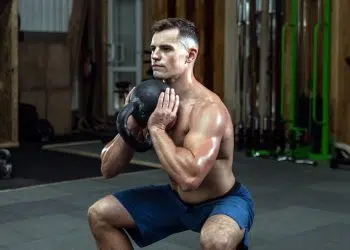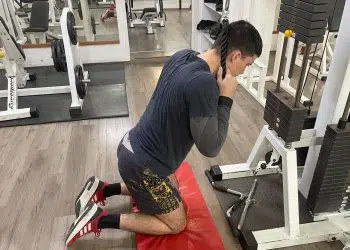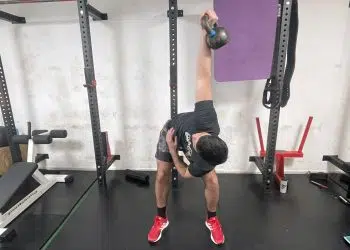We LOVE the barbell deadlift. In terms of bang for your buck, this popular compound exercise is hard to beat. It works a vast number of muscles, and you can use it to build muscle, get strong, and even burn fat. It all depends on how you program it into your workouts.
However, while the barbell deadlift is one of the best exercises around, it’s not always possible or practical. For a start, you need a barbell and some bumper plates and, if you train at home, those might not be available. Also, the barbell deadlift can be a bit intimidating for new exercisers.
The good news is that you don’t have to use a barbell to get a good deadlift workout. In fact, all you need is a single kettlebell.
In this guide, we’re going to explain how to do kettlebell deadlifts, as well as show you some cool alternatives and modifications to keep your workouts fun and exciting. Best of all, you’ll learn how to do this exercise using perfect form, which is crucial for safe, productive training.
Muscles worked during kettlebell deadlifts
Kettlebell deadlifts are a compound exercise. That means they involve several joints and lots of muscles, all working together. Compound exercises are great for building strength and muscle mass, and often replicate every day or sporting activities. In this instance, deadlifts use the same movement pattern as bending down and picking something up from the floor, such as a shopping bag or a child.
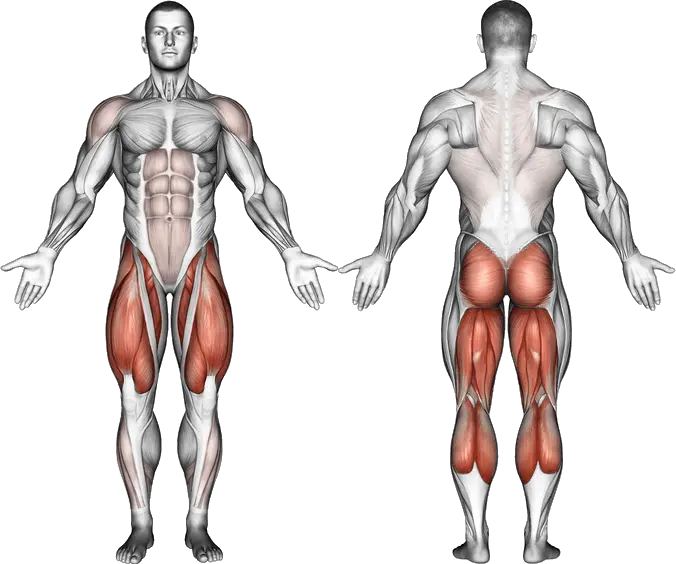
The main muscles involved in kettlebell deadlifts are:
Level Up Your Fitness: Join our 💪 strong community in Fitness Volt Newsletter. Get daily inspiration, expert-backed workouts, nutrition tips, the latest in strength sports, and the support you need to reach your goals. Subscribe for free!
Gluteus maximus: This is the largest muscle in the human body. Known as the glutes for short, its primary function is hip extension. The glutes are located on the back of your hip.
Hamstrings: Three muscles make up your hamstrings – biceps femoris, semimembranosus, and semitendinosus. The hamstrings, which are located on the back of your thigh, are responsible for knee flexion and hip extension.
Quadriceps: Located on the front of your thigh, there are four quadriceps muscles – rectus femoris, vastus lateralis, vastus medialis, and vastus intermedius. These muscles extend your knee joint. Rectus femoris is also involved in hip flexion.
Erector spinae: This is the collective name for the muscles that make up your lower back. They are responsible for extending and laterally flexing your spine and also hold it rigid when you bend forward from your hips.
Mid-traps and rhomboids: Located across and between your shoulder blades, the rhomboids and mid traps work to keep your shoulders back during kettlebell deadlifts. They are important postural muscles.
Upper traps: Your upper traps are the muscles of your upper back. They are responsible for elevation of your shoulder girdle but, in kettlebell deadlifts, they work to prevent your shoulders from being pulled downward.
Core: The collective term for the muscles that make up your midsection, your core helps keep your lumbar spine rigid. It acts a lot like a weightlifting belt.
Forearms: Gripping and holding a kettlebell involves your forearm flexors. The muscles involved in gripping are flexor carpi ulnaris, palmaris longus, flexor carpi radialis, pronator teres, flexor digitorum superficialis, flexor digitorum profundus, flexor pollicis longus, and pronator quadratus (1).
How to perform Kettlebell deadlifts
To get the most from any exercise, it is critical that you perform it correctly. Doing an exercise the right way will make sure you get the best results from your workouts and also keep your risk of injury to a minimum. Here’s how to do kettlebell deadlifts the right way!
Step by Step Instructions for The Kettlebell Deadlift
1- Place your kettlebell on the floor between your feet. Stand with your feet between shoulder and hip-width apart, toes pointing straight ahead or turned very slightly outward.
2- Squat down and hold the top handle of your kettlebell with an overhand grip. Keeping your arms straight, lift your chest, lower your hips, and make sure your back is not rounded. Brace your abs to help keep your spine stable.
3- Without bending your arms, drive your feet into the floor and stand up. Make sure your hips do not rise faster than your shoulders. Push your hips forward and stand upright.
4- Push your hips backward, bend your knees, and lower the weight back to the floor. Reset your core and repeat.
The benefits of kettlebell deadlifts
Still not sure that kettlebell deadlifts are the right exercise for you? Here are the main benefits of this fabulous exercise!
An excellent way to work your posterior chain
Your posterior chain is the collective term for the muscles on the back of your body, from your heels all the way up to the base of your skull. A strong posterior chain is important for good posture as it’s these muscles that hold your body upright against the pull of gravity. In addition, a strong posterior chain is crucial for activities like running, jumping, kicking, and throwing. Whether you play sports or are just someone who cares about their appearance and health, a strong posterior chain is a must.
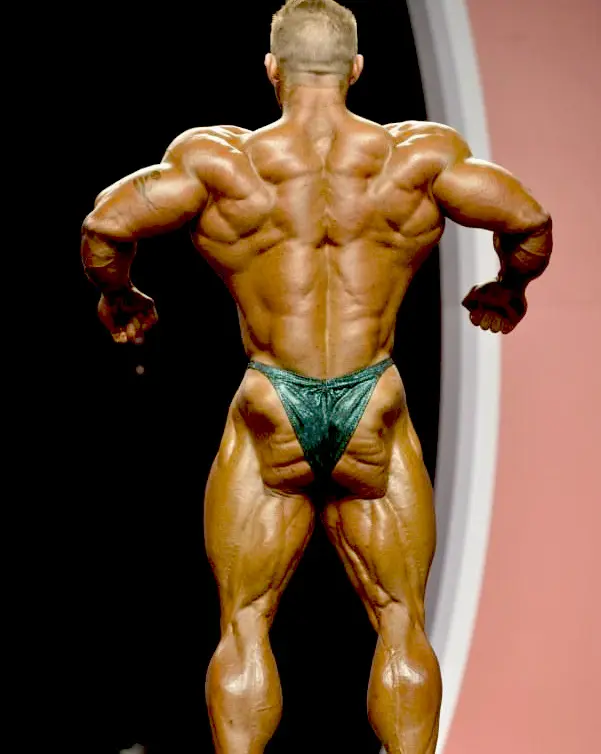
Posterior Chain Muscles:
- Calves
- Hamstrings
- Glutes
- Multifidus
- External Obliques
- Erector spine muscles
- Trapezius
- Posterior deltoids
A useful steppingstone to barbell deadlifts
Kettlebell deadlifts use a very similar movement pattern to barbell deadlifts but, starting with the weight between your feet makes them easier to master. The weight is closer to your center of gravity, and that means it’s a much more forgiving exercise, putting a lot less stress on your lower back. You don’t have to progress from kettlebell to barbell deadlifts but, if you do, this exercise will make that transition easier.
Teaches you the safest way to lift heavy objects off the floor
Lots of people hurt their backs lifting things at home or at work. Kettlebell deadlifts teach you how to lift using your legs while keeping your lumbar spine slightly arched and rigid. This is the safest way to lift anything heavy from the floor. Use the same technique in and out of the gym to avoid lower back injuries.
A good grip exercise
Kettlebell handles are usually thicker than standard barbell and dumbbell handles. This makes them more challenging to hold. Kettlebell deadlifts are a good way to build your grip without doing any specific grip-strengthening exercises.
Ideal for home exercisers
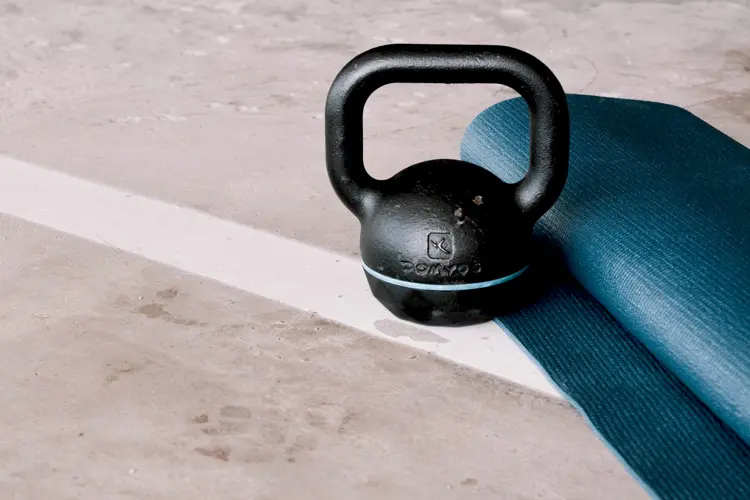
Kettlebell deadlifts require very little space and, apart from a kettlebell, no special equipment is needed. This means that they are ideal for home exercisers. In contrast, regular deadlifts take up a lot of space, and you’ll need a barbell and weights to do them. You may also need a lifting platform to protect your floor.
They burn a lot of calories
Because they involve so many muscle groups, kettlebell deadlifts use a lot of energy and that energy is usually measured in calories. If you want to burn fat or lose weight, the more calories you burn, the better. Building your workouts around compound exercises like kettlebell deadlifts will ensure that you burn as many calories as possible, which should help speed up fat and weight loss.
Kettlebell deadlift tips
Get the best from kettlebell deadlifts with these handy tips!
Keep your abs braced
Bracing your abs helps stabilize your lumbar spine and you’re also less likely to round your lower back. To brace your abs, tense them as if you were expecting to get punched in the stomach and then inhale down into your abdomen. If you’ve done it correctly, you should feel your entire midsection tighten up. Do this at the start of each rep of kettlebell deadlifts.
Level Up Your Fitness: Join our 💪 strong community in Fitness Volt Newsletter. Get daily inspiration, expert-backed workouts, nutrition tips, the latest in strength sports, and the support you need to reach your goals. Subscribe for free!
Keep your lower back slightly arched
Your spine is made of four curved sections of bones called vertebrae. During kettlebell deadlifts, your lumbar spine or lower back should be slightly arched, as it would be if you are standing naturally. There is no need to exaggerate this curve and hyperextend your spine, but you should definitely avoid rounding your lower back as doing so increases your risk of injury.
Keep your chest up
Leading on from the point above, keeping your chest up throughout each rep will help protect your back and keep your torso in the optimal position for safe and effective deadlifting. Pull your shoulders down and back and think “proud chest” to optimize your posture and technique.
Go barefoot
Deadlifting in shoes with raised heels, such as running shoes, will push you forward onto your toes and increases the chances that you will lean too far forward and round your back. Going barefoot makes it easier to keep your heels down and your weight toward the back of your foot. Some gyms don’t allow barefoot training. Minimalist running shoes with flat soles get around this problem.
Raise the weight off the floor to reduce the range of motion
Tight hamstrings may mean some lifters struggle to maintain a lumbar arch during kettlebell deadlifts. You can prevent this problem by starting each rep with your kettlebell resting on a raised surface, such as a workout step or a couple of stacked weight plates. Raise your kettlebell 6-12 inches, or to whatever height allows you to deadlift without rounding your lower back. In the meantime, work on your flexibility and gradually reduce the height of your platform.
Variations and alternatives for the kettlebell deadlifts
Looking for a different way to do this exercise? Or need an alternative? We’ve got you covered! Here are our favorite kettlebell deadlift variations and alternatives.
1- Single-arm kettlebell deadlifts
Have you mastered regular kettlebell exercises? Here’s your next challenge! Using one arm will increase the grip demand of this exercise and also forces you to work harder to keep your shoulders and hips square, increasing core activation in the process.
How to do it:
- Place your kettlebell on the floor between your feet, which should be between hip and shoulder-width apart. Squat down and hold the kettlebell with one hand. Extend your free arm out to the side of your body for balance. Drop your hips, lift your chest, and brace your abs. Look straight ahead.
- Drive your feet into the floor, and without rounding your lower back or bending your arm, stand up straight.
- Bend your knees, push your hips back, and lower the weight back to the floor. Do all your reps on one side before swapping hands.
2- Two kettlebell suitcase deadlift
If the kettlebell deadlift has a disadvantage, it is that most kettlebells are not all that heavy. Get around this problem by using two equal-weight kettlebells at the same time. More weight means a more challenging workout, which should lead to increased muscle growth and strength.
How to do it:
- Place two kettlebells on the floor, roughly shoulder-width apart. Stand directly between them, so they are in line with your mid-foot.
- Bend your knees, squat down, and grip the kettlebells. Your palms should be facing your legs. Brace your abs, straighten your arms, lift your chest, and drop your hips. Your lower back should be slightly arched.
- Drive your feet into the floor and stand up. Do not bend your arms or round your lower back. Keep the weights by your sides.
- Return the weights to the floor by pushing your hips back and bending your knees. Reset your core and repeat.
3- Single-arm suitcase deadlift
Contrary to what you might think, doing exercise #2 with just one kettlebell does not make it easier. Instead, it increases core activation and turns a straightforward exercise into a much more challenging one. Try it and see!
How to do it:
- Place your kettlebell on the floor and stand sideways on to it. Your feet should be shoulder to hip-width apart. Push your hips back, bend your knees, and squat down so you can grip your kettlebell. Your palm should be facing your legs. Brace your abs, lift your chest, and slightly arch your lower back.
- Without leaning to either side, drive your feet into the floor and stand up. Use your core muscles to keep your torso and shoulders perfectly upright.
- Push your hips back, bend your legs, and lower your kettlebell back down to the floor. Reset your core and grip and repeat.
4- Kettlebell swings
While kettlebell deadlifts and kettlebell swings may look very different, they are actually quite similar. Both involve a hip hinge, and you are going to lift your kettlebell without bending your arms. The main difference is speed; kettlebell swings are a much more explosive exercise.
How to do it:
- Stand with your feet hip to shoulder-width apart and your kettlebell in two hands in front of your legs. Brace your core, push your hips back, bend your legs, and lower the weight to about knee-height.
- Drive your hips forward and use this momentum to swing your kettlebell forward and up to about shoulder-height. Keep your shoulders pulled down and back.
- Swing the weight back down and repeat. Do not bend your arms or allow your lower back to round.
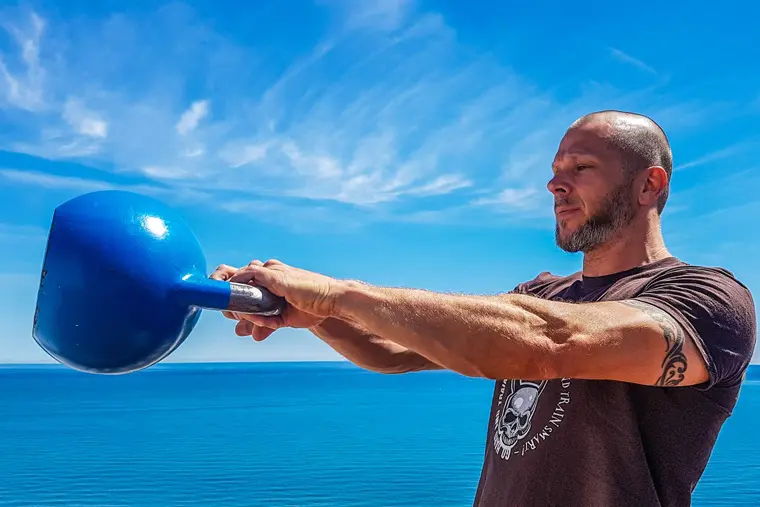
5- Kettlebell kickstand deadlift
The kickstart deadlift places an additional load on one leg at a time. It’s a useful exercise for fixing left-to-right strength imbalances, increasing core activation, and is a good steppingstone exercise before moving on to single-leg deadlifts.
How to do it:
- With your kettlebell on the floor next to you, stand with your feet close together. With most of your weight on the foot nearest to your kettlebell, lift the heel of the opposite foot. This leg is for balance only and should not generate much force during this exercise.
- Push your hips back, bend your legs, and reach down to grab your kettlebell. Your palm should be facing your leg. Brace your abs, straighten your arm, and pull your shoulder down and back.
- Keeping most of your weight on the leg nearest your kettlebell, drive your foot into the floor and stand up straight. Use your core to prevent you from leaning to the side.
- Bend your legs and lower the weight back down to the floor.
- You can also do this exercise with a kettlebell in each hand.
6- Single-leg stiff-leg kettlebell deadlift
Regular kettlebell deadlifts involve almost as much quadriceps activation as they do the posterior chain. This exercise limits quad involvement, emphasizing your glutes and hamstrings, and also works one leg at a time, which will prevent left-to-right strength imbalances.
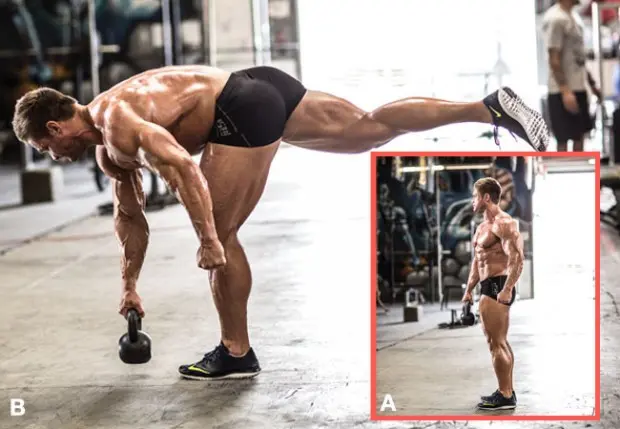
How to do it:
- Hold your kettlebell in both hands in front of your hips. Stand with your feet together. Shift your weight over onto one leg. Brace your abs, lift your chest, and pull your shoulders down and back.
- Keeping your supporting leg slightly bent but rigid, hinge forward from your hips and lower the weight down toward the floor. Extend your other leg out behind you for balance.
- Stand back up and repeat.
- You can also do this exercise while holding your kettlebell in one hand – either on the same side or the opposite side as your weight-bearing leg.
Kettlebell deadlift mistakes
Get the most from kettlebell deadlifts by avoiding these common mistakes.
Rounding your lower back: This is something that a lot of people do! Rounding your lower back increases the stress on your intervertebral discs and spinous ligaments. These structures have a very poor blood supply, which means, if injured, they take a long time to heal. If seriously injured, surgery may be required to fix them. Avoid rounding your lower back by bracing your core and, if you have tight hamstrings, raising the height of your kettlebell.
Squatting the weight up: The kettlebell deadlift is a hip-hinge exercise. You still need to bend your knees, but most of the movement should come from your hip joints. Take care not to bend your knees so much that you turn what should be a hip-dominant deadlift into a knee-dominant squat. There should be a clear difference between these two exercises.
Leaning back at the top of each rep: Leaning back causes hyperextension of your lumbar spine. This increases wear and tear on your vertebrae. There is no advantage to leaning back; it doesn’t make this exercise any more productive, but it does increase your risk of injury. Standing upright is the correct mid-point for kettlebell deadlifts.
Lifting your heels off the floor: To maximize posterior chain recruitment, you must keep your heels on the floor. If your heels lift and your weight shifts forward onto your toes, you increase quadriceps activation and also increase your chances of rounding your lower back. Push your hips back and keep your heels down to ensure your posterior chain gets the workout it deserves. Taking off your shoes may help.
Bouncing the weight off the floor: Deadlifts are so-called because each rep starts from a dead stop. Starting each rep from stationary makes this exercise more challenging and effective. Don’t reduce the value of this exercise by bouncing your kettlebell off the floor. Instead, lower it smoothly and under control, allow it to settle on the floor for a second or two, and then do your next rep.
Letting your hips rise faster than your shoulders: Your hips and shoulders should rise at the same time. Your shoulders could even rise a little quicker than your hips, and you’d still be okay. However, if your hips come up too fast, you put more load on your spinal erectors and increase your risk of back injury. Keep your core braced and monitor your hips and shoulders to avoid this problem. Keeping your chest up will help too.
FAQs
Do you have any questions? We’ve got answers! If you can’t find the information you need below, please drop us a line in the comments section, and we’ll get back to you as soon as we can.
How can I do these exercises if I don’t have kettlebells?
No kettlebells? No problem! You can use a dumbbell or even a weight plate with built-in handles. In a pinch, you could also use a sturdy bag filled with heavy books or canned goods. So long as it’s heavy enough, any object will do.
This exercise hurts by back. Is that normal?
Done properly, kettlebell deadlifts should not cause back pain. You should feel tension in your back, and it may even feel tired after your workout, but the presence of pain suggests something is wrong. You may be rounding your lower back, which increases lumbar stress, or you may even have an underlying injury that needs attention. Fix your technique and, if that doesn’t resolve the problem, reach out to a medical professional for advice.
Aren’t barbell deadlifts better than kettlebell deadlifts?
Exercises are tools, and every tool has a purpose. Kettlebell deadlifts are not better or worse than other types of deadlifts. They are just one of the many tools you can use to get fitter, stronger, and leaner. If you are a powerlifter, your workouts should include plenty of barbell deadlifts as that’s the lift you’ll be doing in competition. However, if you are a bodybuilder, figure athlete, or just someone who wants to get in great shape, you don’t have to choose one type of deadlift over another. Use all the tools (exercises) that are available to you – they all deserve a place in your workouts.
I only have light kettlebells – how can I make this exercise more challenging?
There are several ways you can make doing deadlifts with a light kettlebell more challenging.
Options include:
- Taking shorter breaks between sets, so you start each set already feeling tired.
- Use a slower lifting speed (tempo) to keep your muscles under tension for longer.
- Using resistance bands to make your kettlebell feel heavier.
- Pre-exhausting your posterior chain by doing something like hip thrusts immediately before kettlebell deadlifts
- Attaching extra weights to your kettlebell, such as tying ankle weights to the handles
Wrapping up
Equipped with our guide to the kettlebell deadlift, you now have all the information you need to get the best from this tremendous exercise. Use it, and the variations and alternatives we’ve provided, to strengthen and sculpt your ultimate posterior chain.
There is no denying that conventional barbell deadlifts are the most popular type of deadlift, but kettlebell deadlifts can be every bit as useful. Try ‘em – you’re gonna like ‘em!
References:
1- PubMed: Mitchell, Brittney; Whited, Lacey (2020), “Anatomy, Shoulder and Upper Limb, Forearm Muscles”, StatPearls, StatPearls Publishing, PMID 30725660. https://www.ncbi.nlm.nih.gov





